
Wild Duck
Wild Duck
Wild Duck
Some people may have seen Wild Ducks walking on TV news! Wild Ducks are often found living near us! Their swimming in ponds and rivers is cute. The meaning of that famous proverb and secrets you didn’t know about Wild Ducks… I would be happy if you could become more interested in Wild Ducks by looking at this page!
Wild Duck Basic Infomation

Anseriformes-Anatidae-Anatinae.
Length 50-65cm weight 1~1.5kg.
Wild Ducks found in Japan mainly live near rivers and lakes. There are also migratory species.
They have a round-tipped beak and webbed feet. By the way, Domestic Ducks have the same kind of feet.
Males are basically colorful and flashy in color, while females are often brownish and plain in color.
Their cries are a little similar to those of Domestic Ducks, with “Gue Gue” or “Guwagwa”.
The breeding season is around April to August, and Wild Ducks lay about 1 to 13 eggs at a time. After about 29 days of incubation, chicks are born.
The lifespan is quite famous for Mallard among Wild Ducks, but it is said that they live for 5 to 10 years in the wild and about 20 years if they are kept in captivity. There was even a Wild Duck that lived for 29 years.
Wild Ducks mainly eat grains and aquatic plants, and sometimes small fish and shellfish.
It seems that the relationship with humans began in ancient times, and there are records that Wild Ducks have been eaten as food by common people since the Edo period.
There were dishes such as Duck Hot Pot and Chicken Soba Noodle Soup with Scallions, but because of their strong odor, they were cooked together with a plant called Water dropwort.
Although Duck hotpot dishes still exist today, it is rare to catch and eat Wild Ducks, so the duck meat that is currently circulating in Japan is the meat of a bird called “Domestic Duck” or “Aigamo”.
※Aigamo is a domesticated bird that was born by crossing a duck and a wild duck.
Wild Duck Q&A

Can Wild Duck fly?
Although there is an image of wild ducks living while moving over lakes and water surfaces, have you ever seen a wild duck flying?
Actually, wild ducks are birds that can fly for quite a long time. Some breeds come to Japan as migratory birds, so it’s understandable that they can fly for a long time.
However, there are some species of wild ducks that cannot fly. One such wild duck is called the “Falkland Steamerduck”, which has superior swimming and diving abilities rather than flying.
So why can’t they fly? It is said that the Falkland Steamerduck evolved to move quickly over the water surface using its legs and wings. As a result of continuing such a lifestyle, there was no longer a need to live by flying in the air.
It is said that the development of the sternum is necessary for birds to take off, but in the case of wild ducks, it is said that their growth is slightly delayed.
During this time, Falkland Steamerduck placed importance on moving quickly over the water surface and it is also thought that their sternum development became weak and they could no longer fly.

What is the origin of the name Wild Duck?
In English, it is called “Wild Duck”, but in Japanese it is called “Kamo”. This time, I will introduce the origin of why it is called “Kamo” in Japanese.
There are several theories, such as the word “ukutori (floating bird)” being abbreviated to “kamodori” and this becoming “kamo”, or the theory that the appearance of swimming while flapping its feet on the water surface, called “kakimogaku (scratching water)”, changed to “Kamo”.
There is also a story that the “kama” of “yakamasii (noisy)” became “kamo” because of its loud voice, but since there is no clear evidence for any of these theories, they are just hypotheses.
※A hypothesis is a tentative answer that probably explains what is happening.
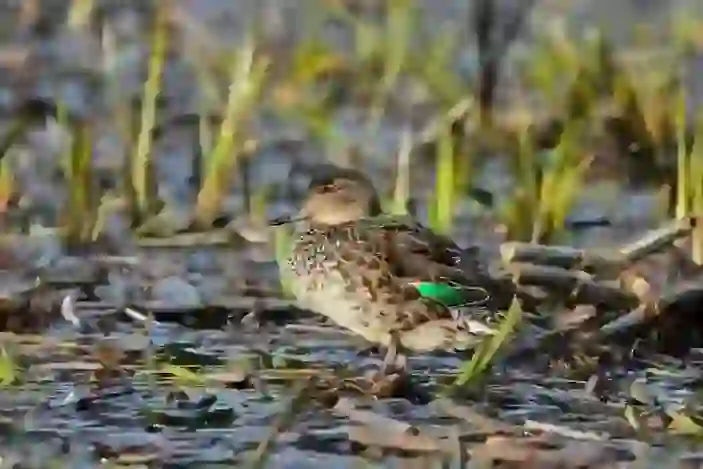
Why do Wild Duck parents and children go for a walk?
The sight of Wild Duck parents and children walking along the road on TV news is very cute and heartwarming.
It is often called “Wild Duck’s walk”, but there is a good reason why Wild Duck parents and children take a walk.
By the way, not all Wild Ducks take a walk, but in Japan, a breed called “Spotbill Duck” seems to be taking a walk.
Spotbill Ducks breed from April to July and lay about 10 eggs at once. Actually, the place where they lay eggs is closely related to this, and the place where Spotbill Ducks lay eggs is decided to be a quiet place where they are not visible to people, such as grassy areas or rice fields.
And when the chicks are born safely and grow up to be able to walk, the mother bird takes the children and walks to the river or lake where there is food. This is what we see.
If it is a place rich in nature, it is relatively easy to reach the water’s edge, but it seems to be quite difficult in the city with many buildings, and sometimes parents and children walk in places with many cars and people… Depending on the location, it can be a quite difficult journey.
Even if they finally arrive at the water’s edge, not all children can grow up.
The reason for this is that the mother bird sometimes deliberately sinks several birds into the river to reduce the number of children.
There is also a reason for this. In order to survive in the harsh natural world, it is necessary to reduce the number of children so that the number of food that can be eaten does not decrease.
If there is less food, in the worst case, all children may starve to death. It is precisely because we want even one bird to survive and become an adult that the mother bird has to do something painful.
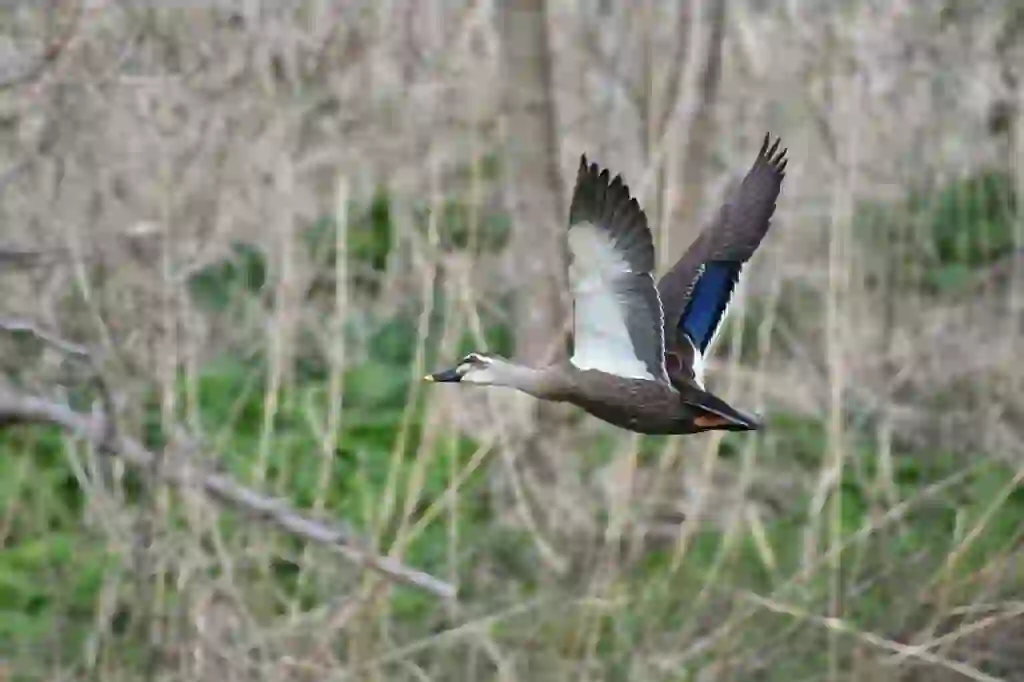
Where does Wild Duck go at night?
Wild ducks are seen swimming in ponds in parks during the day, but they are actually nocturnal.
Some people may think that they are active during the day because they are swimming in the pond in the park. However, they are actually resting by the water during the day and not actively looking for food. So they hardly look for food during the day.
What kind of activities do they do at night? They fly to other ponds and rice fields where there is plenty of food and have their meals there. Especially in rice fields where the rice harvest is over, there are rice husks and other things that have fallen off, which seems to be a good feeding ground for wild ducks.
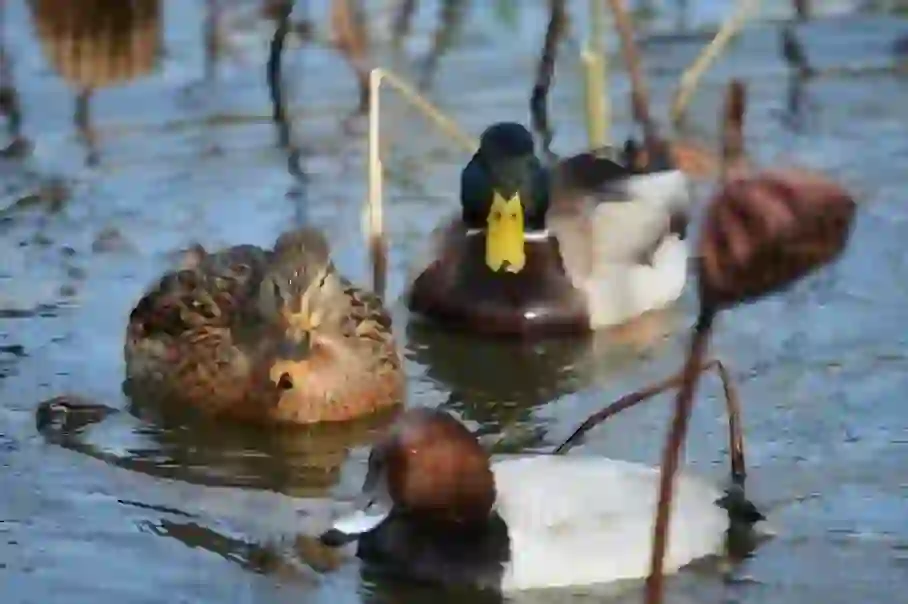
What does "Wild Duck is carrying green onions" mean?
There is a Japanese proverb that says “Wild ducks carry leeks”.
Don’t you wonder why it’s Wild Duck and why leeks come out?
There is a reason for this. In the past, Wild Duck was often eaten in Japanese cuisine, but it was considered to be easy to catch in traps and easy to catch among birds.
In other words, it became used as a meaning of “easy to deceive” as it is easy to get caught in traps. It came to be said that “a good Wild Duck has come (a person who is easy to deceive has come)” to humans.
However, the problem arose that Wild Duck meat has a strong odor and is not suitable for eating boiled as it is… At that time, they adopted leeks as a condiment. They noticed that when cooked together, the leeks would remove the smell of Wild Duck meat. Therefore, leeks became an essential ingredient for Duck Hot Pot.
In other words, it became “lucky” when something convenient happened to oneself, such as bringing not only delicious Wild Duck but also necessary leeks for the pot. This is how the proverb “Wild ducks carry leeks” came about.

Why do males and females of Wild Duck have different plumage colors?
Their body size is almost the same, and it is said that it is easy to distinguish between males and females by the color of their feathers. But why are there differences in color?
Of course, there are some breeds where the male and female feathers are almost the same color, but here we will explain the cases where they are different.
Basically, when it comes to breeding season, males need to show off their flashy feathers to appeal to females because they want to be liked by them. Otherwise, they cannot leave offspring. In other words, males have flashy feathers because they want to be popular with females.
However, strangely enough, after the breeding season is over, the male’s feathers sometimes change to a plain color like the female’s. This is called “eclipse”, but there is a good reason for this too. If their feathers remain too flashy, they will attract attention from enemies and become more vulnerable to attack.
When they want to attract females’ attention, they dress up and then change their appearance so that they don’t stand out… It’s interesting that there was such a reason.

Would you like to become a part of the 'Animalbook.jp'?
Turn your knowledge into Q&A and share it with the world. ※Publication will be activated after purchase. Let's share information together!
Wild Duck Type of List
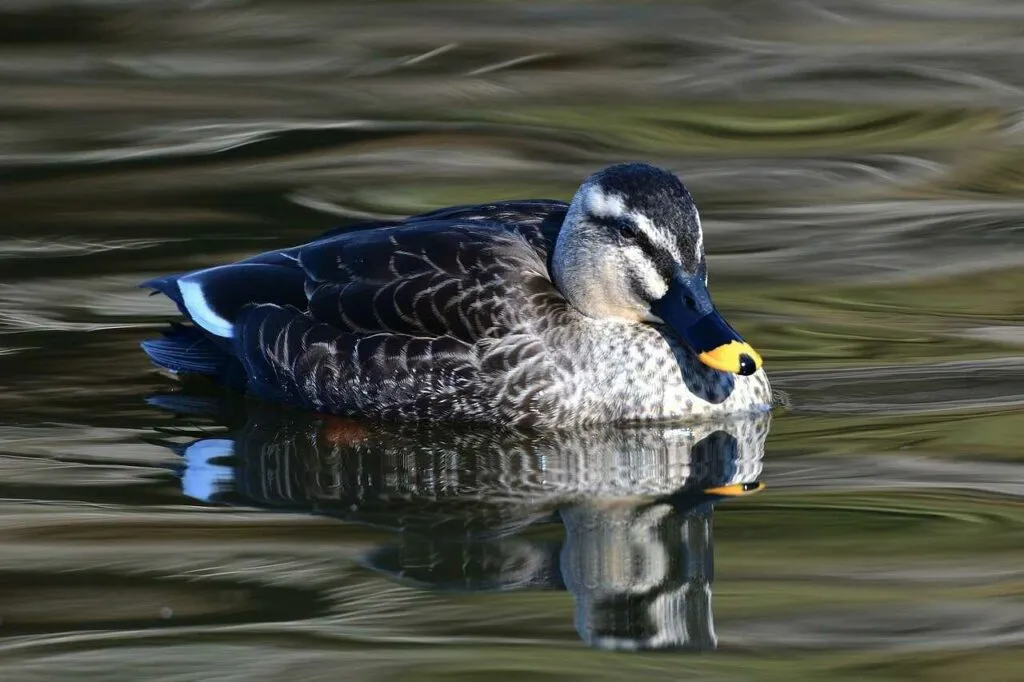
・Spotbill Duck. ・Mallard. ・Falcated Duck. ・Gadwall. ・Eurasian Teal. ・Tufted Duck. ・Greater Scaup. ・Commons Shoveler.
Information
Congratulations! You are the first commenter!

Create Your Favorite List!
Wild Duck
Save the animals you love! Build your own list to quickly revisit your favorites later.

Would you like to leave a comment?
※Please note: This is for the purchase of rights to post comments within the article.
Find Your Favorites!
Our shop offers a unique and attractive selection of goods themed around various animals.
Wild Duck References

- デジタル大辞泉
- エンタメ☆Lab https://entame-lab.com/kamo-tobu/
- Animal Journey http://dream1218.com/tisikizatugaku/13182/
- 厚岸水鳥博物館 http://www.akkeshi-bekanbeushi.com/koho/99-9/9909.html
- マイナビ農業 https://agri.mynavi.jp/2018_06_04_28124/
- 語源由来辞典 http://gogen-allguide.com/ka/kamo_tori.html
- ウィキペディア https://ja.wikipedia.org/wiki/カモ
- 日本自然保護協会 https://www.nacsj.or.jp/archive/2016/12/1446/
- スッキリ https://gimon-sukkiri.jp/kamo-negi/
- ネイチャーエンジニアいきものブログ https://www.nature-engineer.com/entry/2018/12/08/220243
- 万物の寿命まるわかり事典 http://www.lance4.net/banbutuno-jumyo/z0165.html
- マガモ https://ja.wikipedia.org/wiki/マガモ
Wild Duck Introduction of media used
出典:https://pixabay.com/videos/id-947/

出典:https://pixabay.com/images/id-3292405/

出典:https://pixabay.com/images/id-5159761/

出典:https://pixabay.com/images/id-4935054/

出典:https://pixabay.com/images/id-3274500/

出典:https://pixabay.com/images/id-4635671/

出典:https://pixabay.com/images/id-550539/
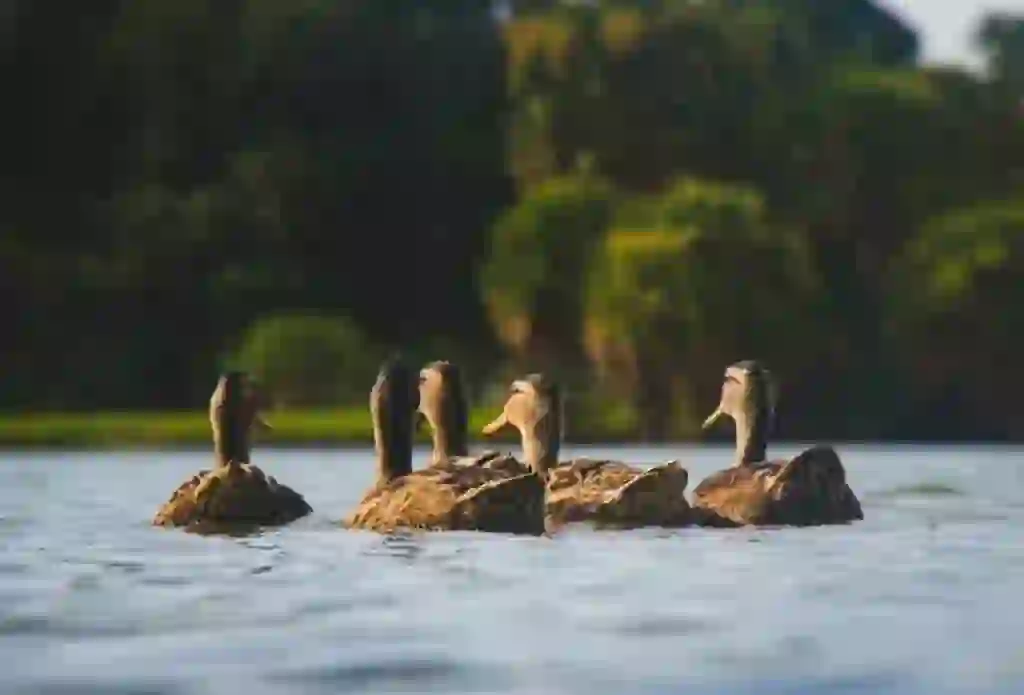
出典:https://www.pexels.com/ja-jp/photo/2020323/

出典:https://pixabay.com/images/id-3871817/
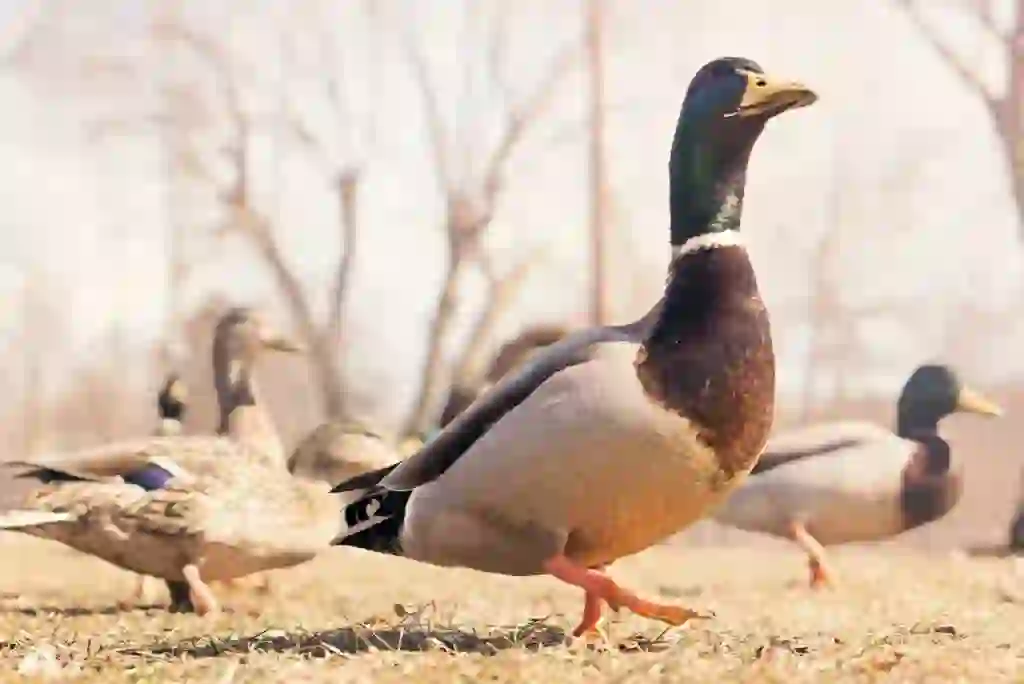
出典:https://www.pexels.com/ja-jp/photo/472/

Help Enrich Our Animalbook.jp with Your Media!
We are constantly looking to expand and enrich our Animalbook.jp with amazing photos and videos of animals. If you have any media that you'd like to share, please contribute and help us showcase the beauty and diversity of the animal kingdom. Your submissions will be credited and featured in our encyclopedia, reaching a wide audience of animal lovers.


















